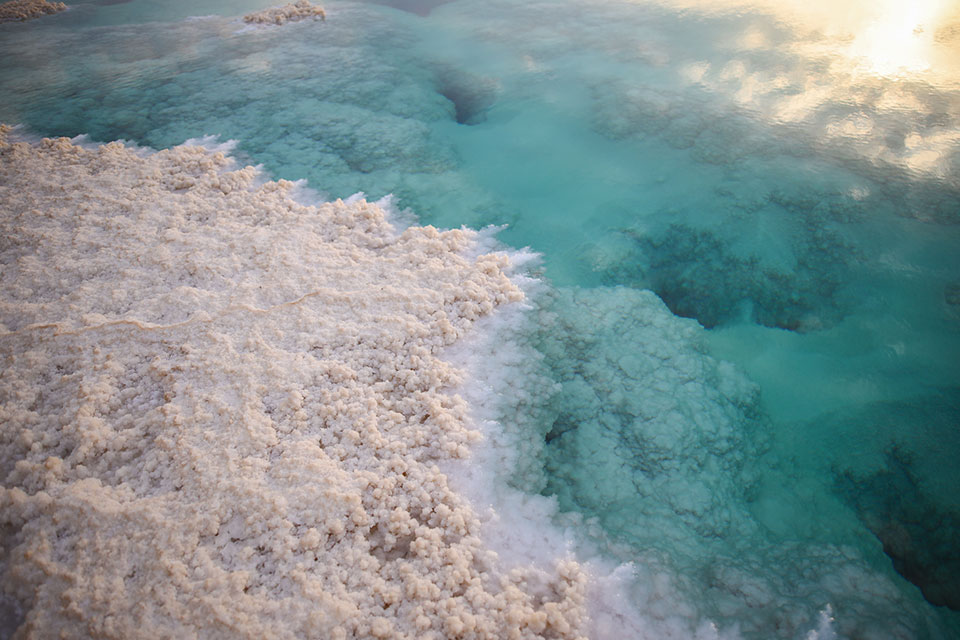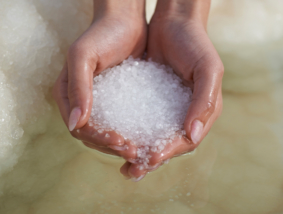There is a torrent of sensational news headlines around the Dead Sea drying up. Truth is this wondrous body of water might be getting smaller, but it won’t disappear completely. Here’s why.

Nature never stays the same
The Dead Sea is a unique ecosystem, situated between Israel, Jordan, and West Bank. It’s a terminal basin, meaning it retains all incoming water flows and allows no outflow to other rivers, seas, and oceans. The Dead Sea is the terminal basin, the end point, of River Jordan which flows in at one end and doesn’t flow out at the other.
So how does the Dead Sea equilibrate its water levels? The answer is simple – through evaporation, which, given the arid Middle Eastern climate is a common phenomenon.
Historically, the Dead Sea’s water levels and salinity have either risen or fallen due to variations in the climate as well as due to the tectonic movements of the valley bottom. These fluctuations are nothing new. In addition, as the Dead Sea’s water level drops, its density and saltiness will rise and eventually reach a kind of an equilibrium.
What then got all the alarm bells ringing recently?
The people effect
Due to the many dams that have been built on River Jordan in the last decades, the river has become barely more than a trickle today. Its water has been diverted both for farming and drinking water for the local populations. Israeli and Jordanian mineral mining for potash has caused further damage as well.
The water started to recede from the shores, currently at a rate of about 3 feet per year, leaving behind large, sometimes dangerous sinkholes. These sinkholes have wreaked havoc on the Dead Sea’s shores. There has also been drought in the area, further contributing to the situation. In the 1990s, there appeared a few dozen sinkholes a year. In 2015, the number rose to around 700 a year.
Some environmental experts predict that this natural wonder will dry out by 2050, while others say it will only become smaller, perhaps a fraction of its current size.
What can be done?
While there’s no doubt that the decline in the Dead Sea water level has been spectacular, there’s reason for hope. Area governments have been looking for a solution for close to two decades now.
A recently devised joint project called The Red Sea–Dead Sea Conveyance, or the Two Seas Canal, aims to desalinate Red Sea water, provide area populations drinking water, and pump water and the remaining salts into the Dead Sea. To transfer the water, over 200 kilometers of piping will be built in Jordan. Ensuring water security is a unifying cause for the area peoples, all of whom share and rely on the area rivers and seas.
From international skincare enthusiasts to millions of tourists, countless environmental NGOs and governments, everyone wants the Dead Sea to survive and thrive. With nature’s help and a little human intervention, it can easily be done.
Media resources:
National Geographic: Can Israel and Jordan cooperate to save the dying Dead Sea?
BBC News: Dead Sea drying: A new low-point for Earth
NBC News: The Dead Sea is dying. A $1.5 billion plan aims to resurrect it.
Zavit: Will a New Pipeline Project Save the Dead Sea?
Wikipedia: Red Sea – Dead Sea Water Conveyance
Smithsonian Magazine: The Dying of the Dead Sea
You might also like

Does the Dead Sea have healing powers?
July 30, 2019




